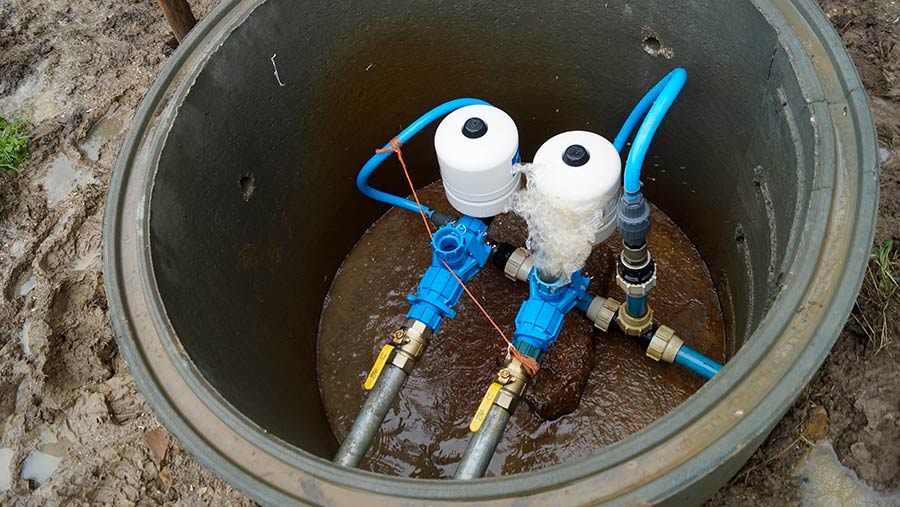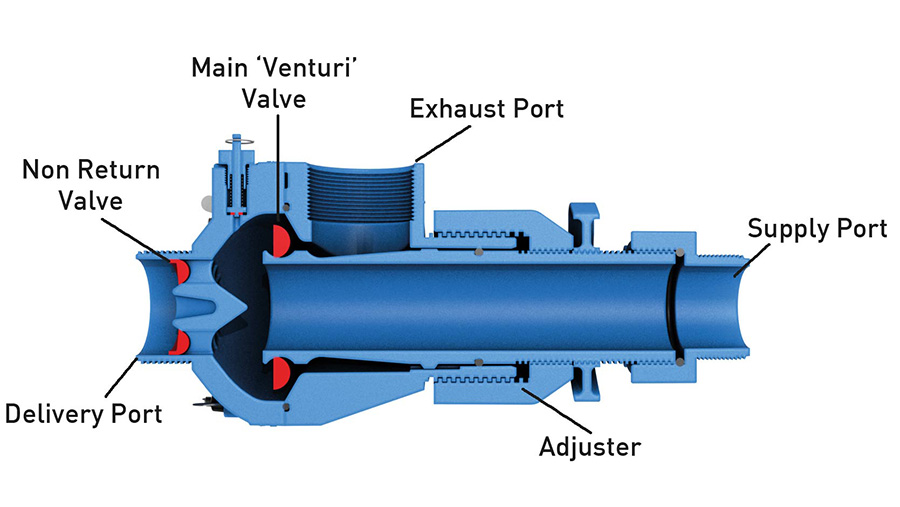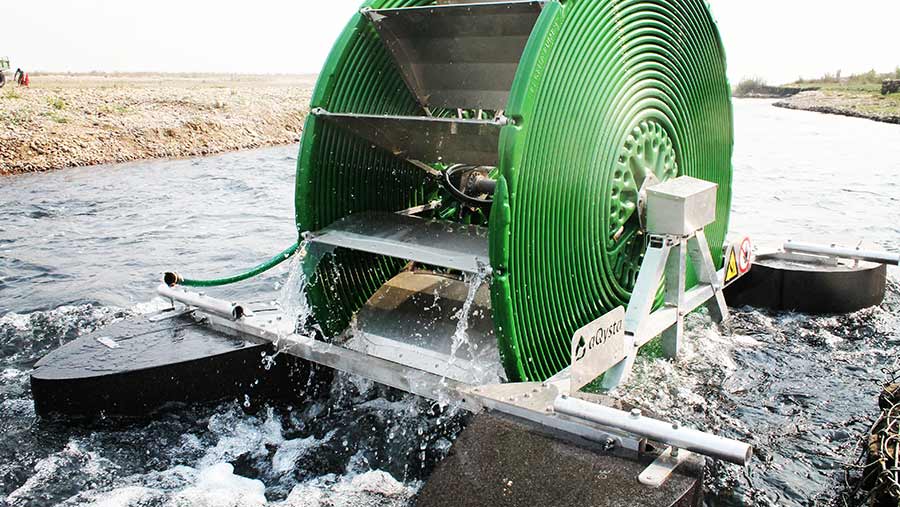Ram pump slashes mains water cost for Devon farm
 Papa Pump © Anna Bowen
Papa Pump © Anna Bowen Tinder-dry conditions through late spring and early summer have brought about the unlikely return of an age-old method of water storage using hydraulic ram pumps.
Cornish company Water Powered Technologies (WPT) says there has been increased interest in its low-maintenance Papa Pump as farmers look to shore up water supplies.
The drought of 2018 saw some boreholes run dry, and with mains water being at best a cost, and at worst not connected, it is increasingly important that farms use other water sources.
See also: How pre-mix bowsers can help increase sprayer output
WPT’s pumping system relies on a flow of fresh surface water from a spring or stream, which is siphoned off to fill a series of tanks. The layout of these varies according to the topography of the land, but usually consists of a catchment tank, supply tank, pump chamber and storage tank, which can then be used to gravity-feed troughs.
The system is largely based on technology developed by a company called Green and Carter in the 1790s, which effectively pressurises a portion of the water flow.
Where there isn’t a very high water supply head, a catchment tank is installed upstream to guarantee adequate water flow. This is fed into a supply tank and then via the hydraulic ram pump to a storage tank or lagoon.
The pump unit is made from a non-corrosive combination of glass and nylon, rather than an old-school cast-iron design. It works at a minimum flow rate of 50 litres/min and requires a supply head of at least 1m – the higher this is, the more efficiently the system will work.
The combination of water flow and head on each farm will dictate the distance and height that the water can be pumped, to a maximum of 150m at 15bar. Of the water that flows through the pump, up to 30% is pressurised and delivered to the storage tank, with the rest returning to the land.
Measuring just 20cm high, the 4kg Papa Pump unit sits in a below-ground chamber that should be at least 1m deep and have a minimum internal diameter of 1m. Unlike traditional hydraulic rams, it has no mechanical moving parts. Instead, the pump has a simple-but-clever combination of three valves – supply, exhaust, and delivery. Water comes in through a supply valve and pressure intermittently rises and drops to open and close a venturi-type exhaust port. When this is shut, the delivery port is open, sending water into the storage tank at a higher pulse pressure.
The reduction in pressure caused by water leaving the pump results in the main valve reopening and the cycle repeating. Pulse rate varies depending on the length of supply pipe, but typically works about once per second.
The pressure can be increased for greater water delivery by adjusting the flow through the pump.

Papa Pump cross-section
Reducing emissions
The system has several advantages over mains-sourced water – with price the primary one.However, it also offers a zero-carbon means of pumping and storing water, moving it uphill without the use of electricity or fuel to eliminate emissions and ongoing financial costs.
In upland areas, taking excess water from streams can reduce the risk of flooding, which benefits local communities as well as individual farming businesses. The stored water can also be used as a wildlife refuge, increasing the biodiversity of farmland.
It means it can be used to store excess winter water for summer use, such as for irrigation or to water livestock, after appropriate treatment. The latter saves directly using streams as water sources, avoiding contamination and damage by livestock, while mitigating the risk of downstream disease transmission.
Cost saving for Devon dairy
The Bond family of Aplins Farm, Honiton, installed two Papa Pumps in 2018.
“The pumps take water from a natural spring situated 500m from the dairy,” says Anthony Bond, who’s 600 Holsteins provide milk for a supermarket contract and the family’s Otter Valley Dairy ice cream.
“We pump about 15,000 litres/day to a storage tank, where it is then gravity-fed to supply the farm’s water drinking troughs, reducing our dependence on and operating costs of the borehole system.”
“Modern farming is increasingly dependent on efficiency savings and protecting the environment, and using the Papa Pumps has enabled us to do both.”
The Papa Pump costs £1,350 and installation is relatively simple, says Mr Bond. However, buyers should bear in mind additional expenses to get the pipework set up to suit their farm, and check environmental legislation and water treatment requirements before installing a ram pump or using the stored water.
While the running costs of these systems are negligible, the capital investment can sometimes be assisted through government grants, which farmers should check with the RPA or devolved equivalents.
Another company, Allspeeds, offers a similar hydraulic ram pump, with prices starting at £2,800. Several farmers have also built their own versions using more rudimentary components.
Aqysta offers a fuel-free water pump system, primarily for irrigation. The Barsha Pump (pictured below) is a floating water wheel and will pump up to 80,000-litres a day to a 20m height. It costs €1,139 (£1,037).

Aqysta Barsha Pump

